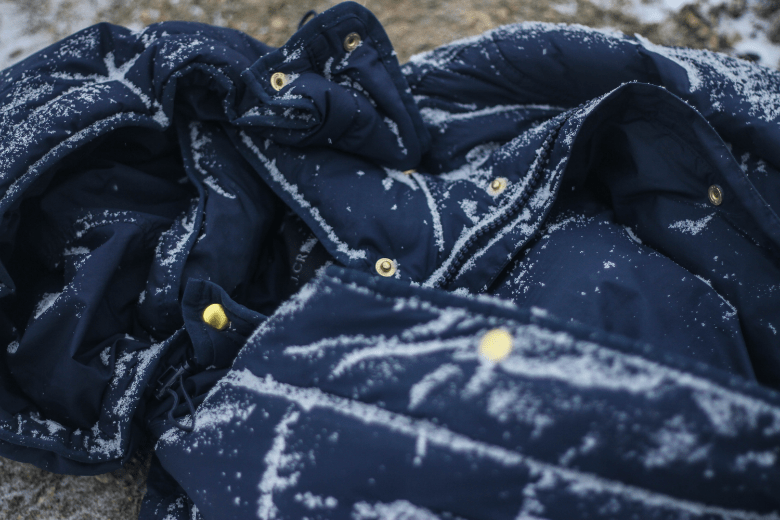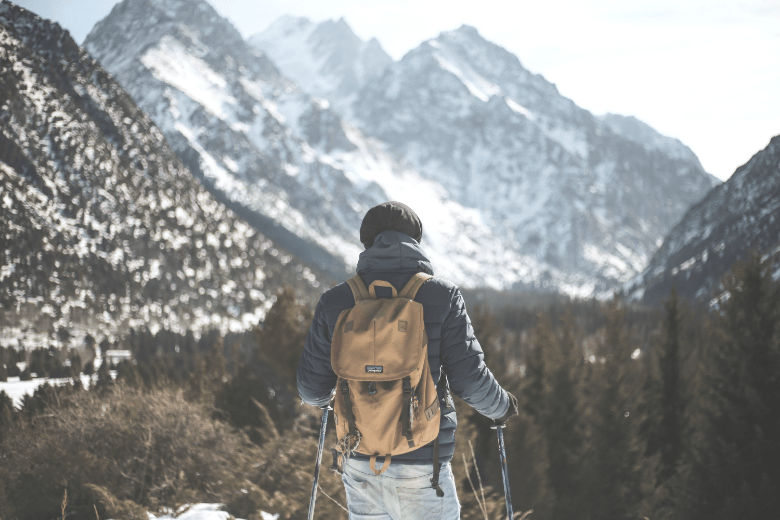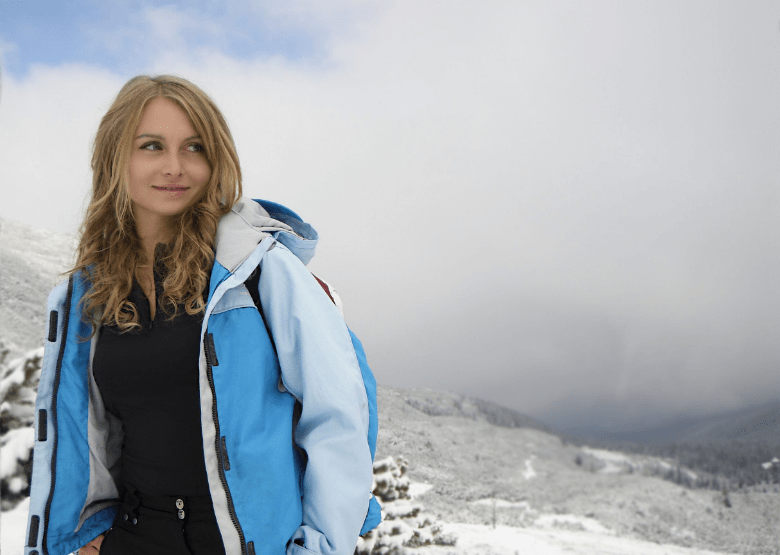When there is a lot of cold outside in the winters, you pick up the thickest and chunkiest jacket to wear. But, after some time, you’ll feel hot in that massive jacket, and you have to unzip it. Then again, you’ll zip it up due to drop in the temperature, and this cycle will be repeated continuously. So, to free yourself from this hassle, you can opt for layering clothing.
One of the clever way of dressing up when going outside, whatsoever the weather, is layering clothing. The similar dressing style goes in rainy season too, when you have to wear the non-breathable coat to remain dry.
So, let’s discuss some of the comfortable ways of dressing up to be warm as well as dry.
Understanding Layering

In simple language, one can understand the term layering as wearing a number of clothes as against putting on a single large one.
The main reason behind doing this is that when we wear one article of cloth on another then in-between the layers, some space is left out which traps some heat coming out of the body.
To enhance the understanding, you can take the example of an insulated cup. In this case, the additional potion of heat maintains the right temperature of the liquid, and the same goes with your body too. Other than this, flexibility is provided by layering.
If you are the person whose outside activities include more of physical work then, in that case, your body will emit more heat, and hence, you will struggle while carrying that bulky coat of yours. On the other hand, in the case of layering, you can remove the layer of clothing if the weather becomes delightful.
On the positive side, layering has reached to next level, thanks to the new emerging technical materials.
Categories of Layering
As a basic rule, there can be three categories of layering which totally depend upon the seasonal change, weather conditions, and your level of tolerance. You can simply add some more layers or deduct some, other than these three layers, as per your convenience.
The optimal option of layering includes the following three categories:
- Base Layer.
- Middle Layer.
- Outer Layer.
Base Layer
This is the first and foremost layer, which is close to your skin. As this layer is in contact with your body, the material of the cloth should be soft enough so that it doesn’t feel rough on the skin. Additionally, the material should be good enough to absorb the moisture; otherwise, the combination of sweat paired with the chilling temperature can result in hypothermia.
My recommendation for you is not to go for cotton material. No doubt, this material is comfortable enough, but on the contrary, it will not help in keeping you dry. If you are in a situation where you are on drill in some deep and thick forest, then this material will make you feel uncomfortable.
There are also some good options, though. These include layering using merino wool or wearing polyester clothing. Both of these materials will prove to be ideal for the base layer. The merino wool is good in absorbing the moisture and even in controlling the odor from the body.
On the other hand, the polyester also performs a great job to wick moisture but start getting wet in case of a heavy workout. If you are thinking to go for material like silk, then it is not a good decision as it is not suitable for either of the purposes.
The weight, along with the fit of the material, must also be kept in mind. This totally depends on your comfort and convenience level as to whether you like to wear loose-fitting clothes or the ones which hug your body.
Middle Layer
After the base layer, the work of this middle layer is to provide your body with the required warmth you need and give you the necessary insulation. For the purpose of this layer, you should pick up a thick material.
But, before choosing the material, you should note that this layer is going to become a little bit soggy as the moisture not absorbed by the base layer is to be handled by the middle one.
Here, synthetic materials have the edge over the natural ones because of their property to dry faster. Although, material like fleece can do the job of keeping you dry and warm; but when it comes to windy weather, the winds can pass right through it and can make you feel chilly.
When we talk about, synthetic material, it is breathable, which helps in preventing your body from overheating, which is not a good situation either.
The best option is to pay for performance-grade technical fabrics.
Outer Layer

This is the outermost layer which will be exposed to the weather directly. While choosing the material for this layer, you have two options; the first one is water-resistant, and the other one is waterproof. Both of these materials can be either breathable or non-breathable.
When it comes to water-resistant material, they are good for the weather where there is a slight drizzling of rain or snow, and you are not in the mood to be outside for a long time.
Talking about breathability, which totally depends on how tightly the fibers of the material are woven? The non-breathable fabrics prove to be appropriate during windy weather and when you’ll like to stay dry. The drawback here is, you’ll sweat a lot in this material.
The waterproof fabrics are the most liked fabrics for outer layering when it possesses the breathable property too. This will solve the problem of sweating, as against non-breathable material, and will also keep you dry providing you comfort.
During the warm weather, one can choose to wear the soft shells which have got the combined properties of the middle as well as outer layers along with breathability.
Components To Be Considered
- The outer material is the first layer of defense against the weather conditions, and hence, a combination of materials is used to make it more protective which makes a high-performance product look different from the normal one.
- If you are not the person who is interested in wearing hats, then it is good to pick up hoodies. When you are indulged in an activity which involves wearing a helmet, then buy an adjustable hoodie. Check if it fits properly or not, before going outside, as sudden rains can happen any time.
- Having drawcord at the bottom side of your outer layer will also work nicely. Through this, you will be protected against the cold air from getting in, and warmth inside the layer will remain maintained. Velcro tabs on cuffs can provide you with a tight fit too and can help in providing added protection to your not-so waterproof fitness band and smartwatch.
- Some people like to have some vents on the outer layer in order to allow some air circulation. But many times, these vents have to be compromised to make the layer waterproof. A proper way of stitching paired with appropriate positioning can solve the problem of protection against rain and snow along with safeguard against excessive heating.
- Never hesitate to invest some good money on these products as your clothing should have all the necessary components and features to make your outing comfortable. Do take note of the warranty or guarantee given by the manufacturer so that defects can be dealt with properly.
Choosing the Layer of Clothes
Now, we have learned the basic essentials related to the layering of clothes. So, it’s time for us to discuss the things which will affect our choice of layer:
- Temperature
- Precipitation
- Level of Activity.
- Level of Comfort.
Temperature
Temperature is an important point to be considered when it comes to choosing the layer. Here, not only the outside temperatures are to be considered, but the temperature inside your body must also be taken into consideration. If you are the kind of person who feels less cold, then your choice will be different from the one who is always cold.
Weight and thickness are other factors which will influence your choice of product. An increase in both of these factors will increase the warmth too.
Instead of increasing the weight and thickness, one can choose to add a fourth layer. Just take note that, through this, your movement must not be restricted and the material is good in absorbing moisture.
Precipitation
Precipitation comes into the role when we talk about the outer shell. Your choice of outerwear depending on weather conditions. It’s nice to give importance to dryness but not too much that you feel uncomfortable due to excess warmth.
Here, the major decision to take is about the water-resistant and waterproof layers together with the breathability. The material which provides a suitable mix of all will be considered ideal.
Level of Activity
If your level of activity is not much, then it will be better to have nice stuffed layers of clothing. But, if your level of activity includes a high level of physical movement, like skiing or snowshoeing, then breathability must not be compromised because in this case, your body is going to emit a lot of heat.
The fit of the clothing also plays a vital role. The person indulged in a high level of activity should choose loose clothes or the layers with some stretch panels.
Level of Comfort
In the end, it’s all about feeling comfortable. Wearing tonnes of clothes, ignoring the comfort level, just to protect yourself against cold weather will definitely ruin your outdoor experience. Here, layering of clothes will help you out by providing you the needed flexibility, convenience, and comfort level.
Some Added Protection

The work of layering doesn’t just end up here. Layering can also be used when it comes to the protection of your hands and feet along with your head. Some additional warmth can be enjoyed by performing layering on these body parts too.
In case of hands, glove liners can help in layering as they are light in weight and can even stretch considerably so as to allow proper blood flow. Restriction in the blood flow can result in frostbite, so do take care of this.
A similar type of layering can help in providing warmth to your feet and trapping the adequate heat from the body.
When it comes to your head, one can opt to wear a cap and add a layer in the form of the hood on the head. This will work really well when there is extremely freezing temperature.
Taking Care of Layers
Whenever you decide to buy a layer, do make a note to always read the instructions for its care before buying it. Do follow the instructions written on it, so as to confirm a long life of the cloth. Before investing money, I always check whether the clothing needs dry cleaning or not because I find dry cleaning to be a troublesome task.
Special care is to be given to some of the specific performance material. For instance, waterproof clothes demand refreshing its coating from time to time. Washing the cloth and giving it a proper iron will do the work for you. In the case of down jackets, to maintain the fluffiness and shine of the cloth, mild detergent is to be used to clean it up.
Sometime, using a washing machine on delicate clothes will result in damaging the material. Washing machines can be hash on some fabrics, and hence, it is better to handwash such fabrics to make it look like a new one.
The layering of clothes is a great way to fight against various weather conditions. It provides you the warmth you need along with the flexibility, which is not possible when you wear a single bulky parka. Another advantage which layering provides us is that we can easily swap the layer in accordance with the weather conditions forecasted. So, say bye to the old bulky way of staying warm and start layering clothing.

